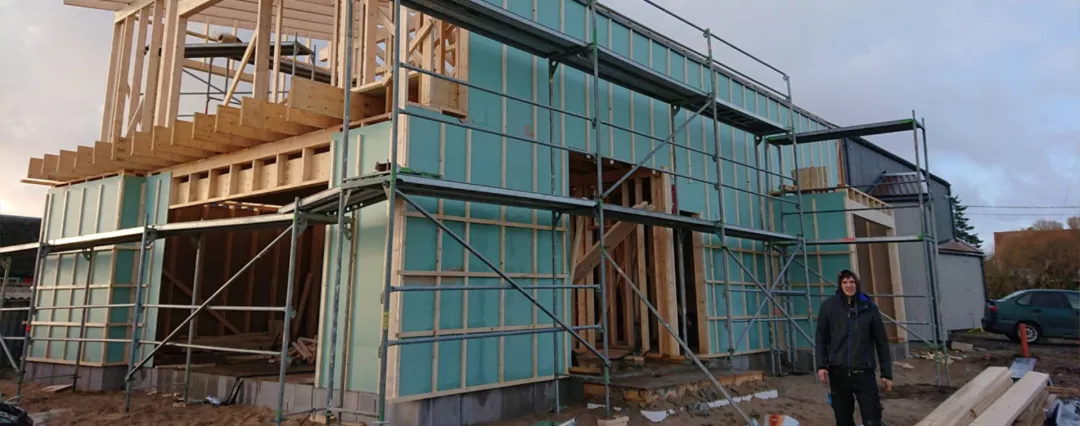General information
RDP Priority
- P6. Social inclusion and local development
RDP Focus Area
- 6B: Local development
RDP Measure
- M19: LEADER/CLLD
Beneficiary type
- Non-governmental organisation
Summary
The voluntary land and sea rescue team, operating in the Kaberneme village on the northern coast of Estonia, had limited space to store and protect its vehicles and equipment during the harsh winter months. Their vehicles and machinery had to be kept at the homes of team members or in rented places, which caused delays when the team was called out on an emergency. LEADER funds were used for the construction of a building depot to enable the rescue team to operate effectively all year round.
Results
- The rescue team can now keep their vehicles, machines and other devices in a garage all year round, and can more effectively provide their services to people in need.
- The depot building can also be used for hosting seminars, weddings, cinema screenings, or theatre performances, as well as different festive events and receptions. It can also become a population protection centre in case of a crisis.

Promoter
NGO Kaberneeme Klubi
Funding
Total budget: 96 139 (EUR)
EAFRD: 56 000 (EUR)
National/Regional: 14 000 (EUR)
Private/own: 26 139 (EUR)
Topics
Resources
Documents
Constructing a building depot for the Kaberneme voluntary land and sea rescue team.
(PDF – 1.1 MB)
Links
Context
Kaberneme is a small village in Harju County on the northern coast of Estonia. Kaberneme has a voluntary land and sea rescue team, which has been operational since 2001. The rescue team did not, however, have a depot building to store its vehicles and equipment, which hindered the community service. The team’s cars and equipment weren’t safe. The fuel tanks and equipment were stolen many times, so the volunteers had to store the rescue craft, rescue equipment, and motor pump at their own homes or in rented storage. This meant that the rescue team needed more time to respond to emergencies. In addition, the vehicles and machinery could not be left outside during winter months, as the water tanks and pipelines would freeze and then break. One way to avoid such problems was to pay for nearby storage in garages.
Objectives
The aim of this LEADER project was to establish a depot building that would enable the rescue team to operate all year round, and be able to offer its services to the local community more efficiently.
Activities
Project activities included:
- writing the project application;
- securing private co-finance;
- carrying out public procurement;
- applying for a construction permit;
- constructing a new garage of 112 m2 x 7 m high;
- applying for the usage permit;
- reporting & feedback.
The project was realised in cooperation with different partners, including the local government, the Ministry of Interior Affairs, the Fire Department, the Police and Border Guard Board, the Rescue Association, the Paying Agency and the LEADER regional association, nearby freelance rescue teams, enterprises, and private individuals.
Main results
- The project is probably the first time a depot building has been built in Estonia for this reason. Previously, depot buildings were either renovated or expanded, but none of them were completely new.
- The added value of the depot building is its multi-functionality. In addition to being used as a garage and storage area for the rescue team, it can be used for hosting different festive events, seminars, entertainment events, and receptions. The project has already hosted one event for 60 local people.
- The building can be autonomous during a crisis, with water and electricity reserves of around seven days. It can also hold food and first-line supplies for a week for at least 50 people. Thus, it can function as a population protection centre.
- In the future, there are plans to establish a “control centre” in the depot building, from which all the alarms and surveillance cameras, co-operation with auxiliary police, neighbourhood watch and security companies could operate together. There is also a plan to make the building energy efficient, by installing solar panels.
Key lessons
- Planning a project like this requires time, as well as up-to-date knowledge of legal requirements and funding processes. The rescue team had to get approval from local and national public bodies before they could start the detailed planning.
- Contingency planning is useful, as shown in this case, when public consultation resulted in a need to modify the building plan before the project could receive all its permissions.
Contact Information
+372 5919 9799
